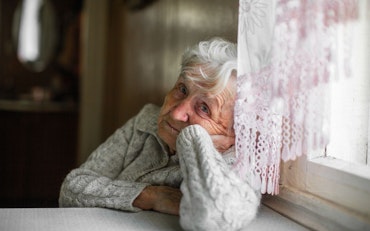A new government strategy could impact how your personal information is shared
How could you be affected with the implementation of the new digital strategy?
![<p>The new aged care strategy will still allow older Australians to choose between accessing aged care services digitally or face-to-face. [Source: Shutterstock]</p>](https://agedcareguide-assets.imgix.net/news/articles/wp/manphone0907.jpg?fm=pjpg&format=auto&w=550&q=65)
The new aged care strategy will still allow older Australians to choose between accessing aged care services digitally or face-to-face. [Source: Shutterstock]
Key points:
- The Australian Government has recently announced the Aged Care Data and Digital Strategy to improve aged care accessibility for older Australians
- Approximately 4.2 million Australians are aged 65 years or older, according to the Australian Institute of Health and Welfare
- Priorities of the new strategy include maximising direct care provided by aged care workers and improving choice for how older Australians access aged care services
The Australian Government has recently released the first digital strategy to improve aged care for older Australians.
The Aged Care Data and Digital Strategy 2024 – 2029 has been developed to provide choices for older Australians accessing aged care services in person or digitally and maximise the current aged care workforce.
With the number of older Australians expected to double in the next 40 years, according to the Australian Government, finding a viable solution to ensure quality aged care is a priority in the new digital strategy.
While this new digital strategy is expected to improve aged care, older Australians can choose between using the technology or attending face-to-face services.
Approximately 4.2 million Australians are aged 65 years or older, according to recent data from the Australian Institute of Health and Welfare.
The Minister for Aged Care Anika Wells commented recently about the importance of including technology to create a better aged care system for older Australians.
“With older people at its centre, the digital strategy aims to increase [the] digital health literacy of older people, giving them greater choice and independence as they age,” she said.
“Designing the best aged care system for older people in Australia means embracing innovation and the technologies available so we can continue to restore dignity to aged care.”
Multiple priorities and purposes are associated with the new digital strategy including:
- providing a choice of receiving aged care using technology or in person;
- maximising time that aged care workers can provide direct care;
- sharing secured data between registered services so older Australians can provide their information once.
One of the main principles is that personal data will be safely stored so that once an older person describes their situation, it won’t need to be repeated constantly for different registered organisations.
For example, data provided to a healthcare provider would be shared between workers so that when care is given, aged care workers can quickly adapt to the individual preferences and needs of older people without requiring extensive questioning.
When moving between different services including home care and hospitals, data can be securely shared so that the stress of changing situations can be managed without the older person needing to constantly explain their needs.
An additional priority of the new digital strategy is to ensure that any personal data collected from older Australians will be stored and shared securely.
With security measures in place, the Australian Government stated that ‘aged care data will be protected from emerging risks.’ This includes using processes to ‘provide access to data and systems only where there is a genuine and approved need, and never at the expense of the protection, privacy and security of data.’
The new secured database is also expected to free up time for aged care workers so that less time is spent on administration and time caring for older Australians can be maximised.
Older Australians in aged care homes can currently expect to receive an average of 200 minutes of personal and nursing care, as per information available on the My Aged Care website. This involves assistance from healthcare workers such as registered nurses and personal care workers.
However, as this is a national average, not everyone in Australian aged care homes will receive the same amount or quality of care as older Australians with higher care needs.
Approximately 370,000 aged care workers in Australia are currently employed in direct and indirect roles according to recent statistics. However, current estimates suggest that there will be the equivalent of 212,000 full-time worker roles vacant in the aged care industry by 2050.
However, a recent increase in wages for nurses could improve age care services for older Australians by retaining and growing numbers in the current workforce. To learn more about the impact of this, head to this article: Wage increase for nurses may mean better care for older Aussies in aged care homes.
Other non-digital aspects are also set to improve in this strategy with the development of new roles such as Aged Care Specialist Officers. These officers will assist older Australians face-to-face to help them determine eligibility for government-funded services, provide appropriate aged care information and connect them to local services.
The Australian Government has released the Aged Care Data and Digital Strategy 2024 – 2029 report which is accessible online.
What are your thoughts on the new digital strategy?
Let the team at Talking Aged Care know on social media.
For more information and news in the aged care industry, subscribe to our free newsletter.
Relevant content:
Almost half of older Aussies living in aged care homes could benefit from this therapy
The number of Australians with dementia is expected to double by 2058










